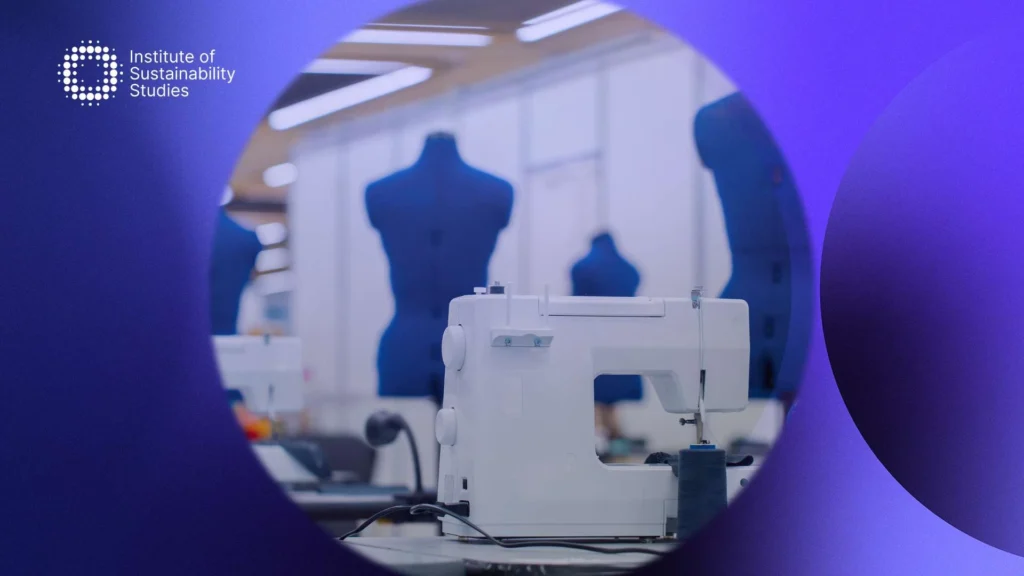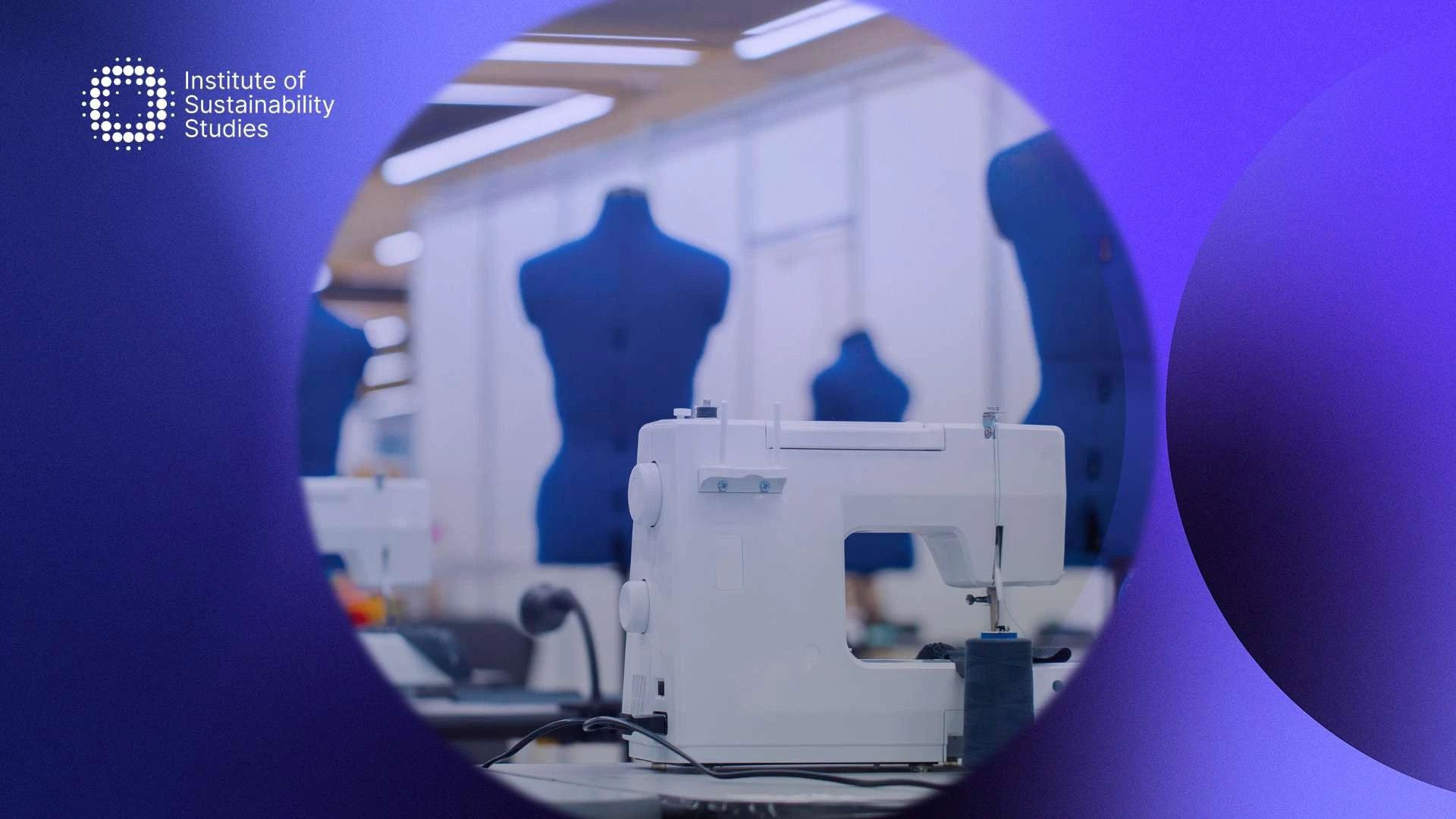Despite growing awareness of fashion’s impact, just 12 percent of materials used in clothing are recycled into new garments. The rest is discarded along with the emissions, energy, and resources embedded across the supply chain. For businesses prioritising corporate sustainability, this reveals a pressing blind spot: supply chain emissions often originate in places that are outsourced, opaque, and difficult to influence.
As scrutiny intensifies across sectors, emissions linked to sourcing, manufacturing, and distribution are becoming central to credible climate strategies. Understanding where they come from (and how to reduce them) has become one of fashion’s defining sustainability challenges. Continue reading as we explore how fashion brands can measure and reduce emissions, sharing key tactics and actionable strategies.
Where emissions come from in fashion supply chains
The fashion industry’s greenhouse gas emissions (GHG emissions) come from every stage of the value chain, from growing fibres to producing garments, transporting them globally, and eventually discarding them.
1. Raw material production
Raw material extraction and processing are among the largest contributors to fashion-related emissions. The two main fibre types (cotton and synthetics, such as polyester) carry significant climate impacts. Cotton cultivation requires intensive irrigation and fertilisation.
The production process results in high emissions due to energy use and nitrous oxide release from fertilisers. Polyester, the most widely used fibre, is derived from fossil fuels. Its production emits nearly three times more CO₂ per kilogram than cotton. According to the European Environment Agency (EEA), 38 percent of total GHG emissions in the textile lifecycle come from raw material production and processing.
2. Textile manufacturing and dyeing
The manufacturing stage, particularly textile dyeing and finishing, is highly resource- and carbon-intensive. Textile dyeing accounts for roughly 20 percent of global industrial water pollution, as per the United Nations Environment Programme (UNEP). Moreover, energy use in textile mills, often powered by coal or diesel, leads to significant emissions. A McKinsey & Global Fashion Agenda report also found that fashion accounts for 1.2 billion tonnes of CO₂e per year. This is more than international aviation and maritime shipping combined.
3. Global logistics and transportation
Garments are typically produced in low-cost manufacturing hubs such as Bangladesh, Vietnam, and China, then shipped globally. To put that into perspective, sea freight emits relatively low carbon per tonne-kilometre, but fashion brands’ growing use of air freight (especially for fast fashion) drastically increases emissions. Air freight, on the other hand, produces 60 times more CO₂e per tonne-kilometre than shipping by sea, according to Our World in Data. While logistics contribute approximately 2–3 percent of total fashion emissions, this impact rises when brands prioritise speed over sustainability.
4. Consumer use and garment care
The way consumers care for their clothing also contributes significantly to fashion’s overall footprint. In other words, washing and drying clothes, especially in energy-intensive machines, generate substantial emissions. Tumble drying in particular is highly carbon-intensive. On top of that, synthetic fabrics (e.g. polyester, nylon) shed microplastics during washing, contributing to marine pollution. According to WRAP UK, extending the life of a garment by just nine months can reduce its carbon, water, and waste footprints by 20–30 percent.
5. End-of-life and disposal
At the end of their useful life, most garments are either landfilled or incinerated, both of which result in carbon emissions. The Ellen MacArthur Foundation reports that a truckload of textiles is landfilled or burned every second globally. In addition, less than 1 percent of clothing is recycled back into new garments, representing a significant loss of embedded energy and materials. This linear “take-make-waste” model is a key driver of fashion’s unsustainable environmental footprint.
Cut through the complexity of Scope 3 reporting and action
with expert-led learning
Why are Scope 3 emissions harder to tackle?
For fashion brands, Scope 3 supply chain emissions are not just hard to track; they are often the most material to their overall climate footprint. They are the indirect emissions that occur across a company’s entire value chain, from suppliers and logistics to how customers use and dispose of products. Often accounting for over 70 percent of a company’s total carbon footprint, they are also the most difficult to measure and reduce.
The core challenge is control. Unlike Scope 1 and 2 emissions, Scope 3 stems from activities outside a company’s direct ownership, such as third-party manufacturing or consumer energy use, making influence more difficult. Data gaps are another major barrier. Reliable emissions data from suppliers is often lacking, forcing companies to rely on estimates that compromise accuracy and hinder progress tracking.
Global supply chains add complexity. Emissions can span multiple countries, suppliers, and transport routes, making mapping and accountability difficult, particularly in sectors like fashion. There’s also an inconsistency in that while frameworks like the GHG Protocol exist, companies interpret them differently. In other words, some reports only select categories, while others calculate everything with varying methodologies. Still, tackling Scope 3 is non-negotiable as regulators, investors, and consumers expect companies to account for their full climate impact, including emissions beyond their direct control.
How fashion brands can measure supply chain emissions
Below are some practical ways fashion brands can measure supply chain emissions.
1. Map the full supply chain
Start by identifying every tier of the supply chain, from fibre production and spinning mills to dyeing, garment manufacturing, logistics, and packaging. Many brands only know their Tier 1 suppliers (finished goods manufacturers), but emissions from Tier 2 (fabric mills) and Tier 3 (raw materials) are often larger. Tools like the Higg Index and Textile Exchange’s Material Impact Matrix help assess impacts across different fibres and processing stages.
2. Collect activity data where possible
The most accurate emissions reporting comes from primary (activity-based) data, such as:
- Energy use (kWh) from factories
- Fuel types for transport
- Volume of textiles dyed or processed
However, suppliers may not have this data readily available. In that case, estimates can be made using:
- Spend-based data: Estimating emissions based on how much is spent per category (e.g. per $1,000 spent on cotton shirts).
- Emission factors: Using publicly available databases like Ecoinvent or UK Government GHG Conversion Factors.
3. Engage suppliers
Collaborating with suppliers is essential. Encourage or require them to:
- Complete sustainability assessments (e.g. Higg Facility Environmental Module).
- Share energy consumption and production data.
- Transition to renewable energy where possible.
Incentives such as long-term contracts or preferred supplier status can help drive participation.
4. Use emissions calculation platforms
Platforms like:
help fashion brands quantify emissions per product or across categories, often using a mix of supplier data, emission factors, and product-level modelling.
5. Calculate and report by GHG Protocol categories
Most fashion supply chain emissions fall under:
- Category 1: Purchased goods and services (e.g. textiles, trims, production).
- Category 4: Upstream transportation and distribution.
- Category 5: Waste generated in operations.
Brands can use the GHG Protocol’s Scope 3 Standard to calculate these using either:
- Supplier-specific method (most accurate).
- Hybrid method (mix of actual and estimated data).
- Spend-based method (least accurate but simplest to start).
6. Disclose and improve over time
Once calculated, brands should report emissions transparently through channels like:
- Annual sustainability reports.
- CDP Supply Chain Disclosure.
- Science-Based Targets initiative (SBTi) for fashion.
As data quality improves and relationships strengthen, emissions estimates become more accurate and more actionable.
Build internal capability to reduce Scope 3 emissions with accredited sustainability training
Strategies to reduce emissions across the supply chain
Here are some strategies companies in the textile industry can leverage to reduce supply chain emissions and build more resilient, low-carbon operations.
Choose lower-impact materials
Switching to materials with smaller carbon footprints is one of the most effective interventions.
- Use certified organic cotton, recycled fibres (e.g. rPET, recycled nylon), or regenerative natural fibres.
- Avoid virgin polyester where possible; it’s fossil fuel-derived and energy-intensive to produce.
Optimise textile processing and dyeing
Dyeing and finishing are highly energy- and water-intensive.
- Work with mills that use closed-loop systems, waterless dyeing, or renewable energy.
- Choose certified wet processing facilities (e.g. Bluesign®, GOTS-certified) that follow best practices in chemical and energy use.
- Support suppliers to upgrade to low-carbon boilers and energy-efficient machinery.
Engage suppliers on energy transition
Most emissions in Tier 1 and Tier 2 suppliers come from fossil fuel-based energy use.
- Collaborate with key suppliers to switch to renewable energy, either on-site (e.g. solar) or via clean power purchase agreements (PPAs).
- Provide technical or financial support to help them decarbonise operations.
- Establish supplier engagement programmes to track emissions reductions and progress.
Improve logistics and distribution
Transport emissions can be lowered through smarter logistics.
- Shift from air freight to sea or rail wherever possible.
- Consolidate shipments to reduce frequency and optimise container usage.
- Use nearshoring or regional sourcing strategies to reduce shipping distances and lead times.
Design for durability and longevity
Extending garment life reduces the need for replacement and lowers lifetime emissions.
- Focus on quality construction, repairability, and timeless design.
- Offer care guides, repair services, or take-back schemes to help consumers extend product use.
- Encourage circular business models such as rental, resale, and upcycling.
Measure and act on Scope 3 emissions
Tackle embedded emissions by:
- Mapping emissions hotspots across the supply chain.
- Setting science-based targets for Scope 3 emissions.
- Collaborating with suppliers to collect data and implement changes.
Tools like Carbonfact and Green Story help brands measure and reduce product-level emissions effectively.
Reduce overproduction
Producing less is one of the most direct ways to reduce emissions.
- Use on-demand or small-batch production models to align supply with actual demand.
- Leverage AI-driven demand forecasting to reduce waste and unsold inventory.
- Shift from fast fashion cycles to more seasonless or modular collections.
Conclusion
Reducing emissions across fashion’s vast and intricate supply chain is no small feat. It demands cross-border collaboration, robust data, supplier engagement, and a rethinking of materials, methods, and mindsets. But with growing pressure from regulators, investors, and consumers, inaction is no longer an option.
Looking ahead, the fashion industry stands at a pivotal point. The tools to measure and manage Scope 3 emissions are improving. Innovations in circular design, renewable energy, and digital traceability offer new pathways to decarbonisation. Yet the ultimate shift will come not just from technology, but from leadership – by brands willing to embed sustainability into their business models and proactively address supply chain emissions at every level.
With a strong background in environmental policy, Nazia is dedicated to driving sustainability and fostering partnerships for a brighter and greener future. She actively engages in crafting pivotal policy submissions directed to the European Commission as a member of the Zero Waste Alliance of Ireland.
She supports upcycling initiatives and is an advocate for ‘reduction’ over ‘recycling’ and ‘reuse’.
- Nazia Naheed Husainhttps://instituteofsustainabilitystudies.com/insights/author/nazia/
- Nazia Naheed Husainhttps://instituteofsustainabilitystudies.com/insights/author/nazia/
- Nazia Naheed Husainhttps://instituteofsustainabilitystudies.com/insights/author/nazia/
- Nazia Naheed Husainhttps://instituteofsustainabilitystudies.com/insights/author/nazia/










